© 2025 MJH Life Sciences™ , Patient Care Online – Primary Care News and Clinical Resources. All rights reserved.
Nutrition Essentials in Cystic Fibrosis: CFF Guidelines, New Findings, & Goals
Because patients with cystic fibrosis (CF) are at high risk for malnutrition, nutritional support is a major component of patient care. Scroll through the slides below for concise summaries of the key issues in nutritional management, current clinical care recommendations, the latest research findings, and the goals of ongoing research efforts.
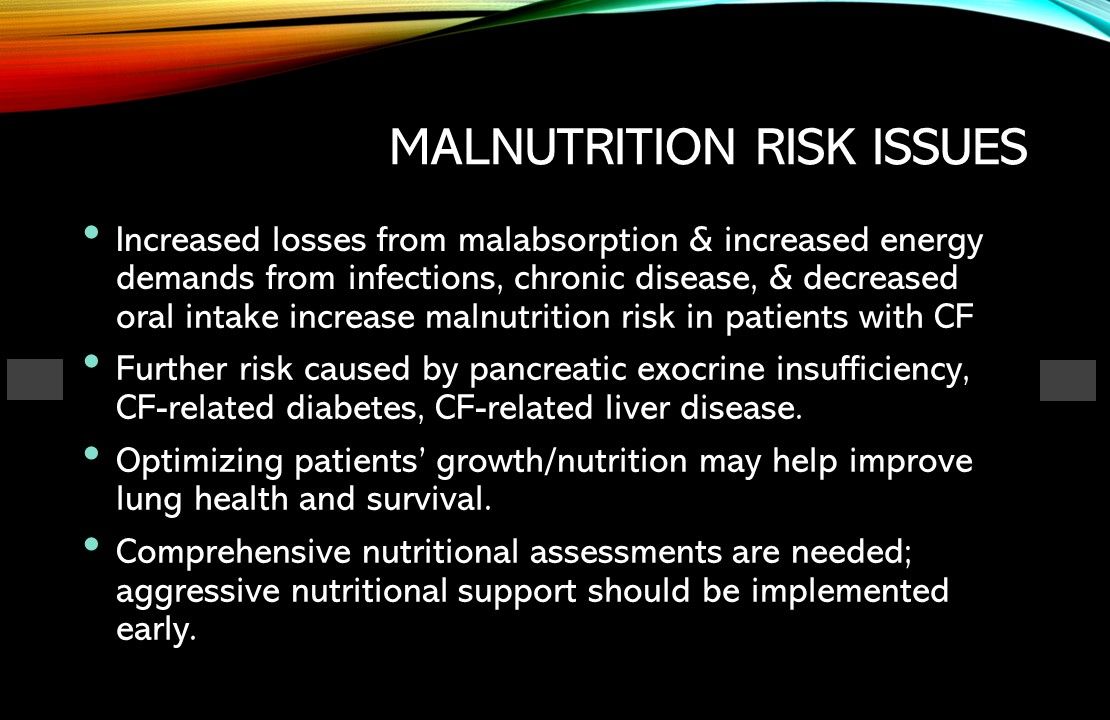
Malnutrition risk issues. Patients with CF are at risk for malnutrition as a result of increased losses from malabsorption and increased energy demands from infections, chronic disease, and decreased oral intake. Complications that place patients at further risk include pancreatic exocrine insufficiency (PEI), CF-related diabetes, and CF-related liver disease. Optimizing patients’ growth and nutrition can positively influence their lung health and overall survival. Comprehensive nutritional assessments are needed to identify patients at risk, and aggressive nutritional support should be implemented early. Clinics in Chest Medicine.
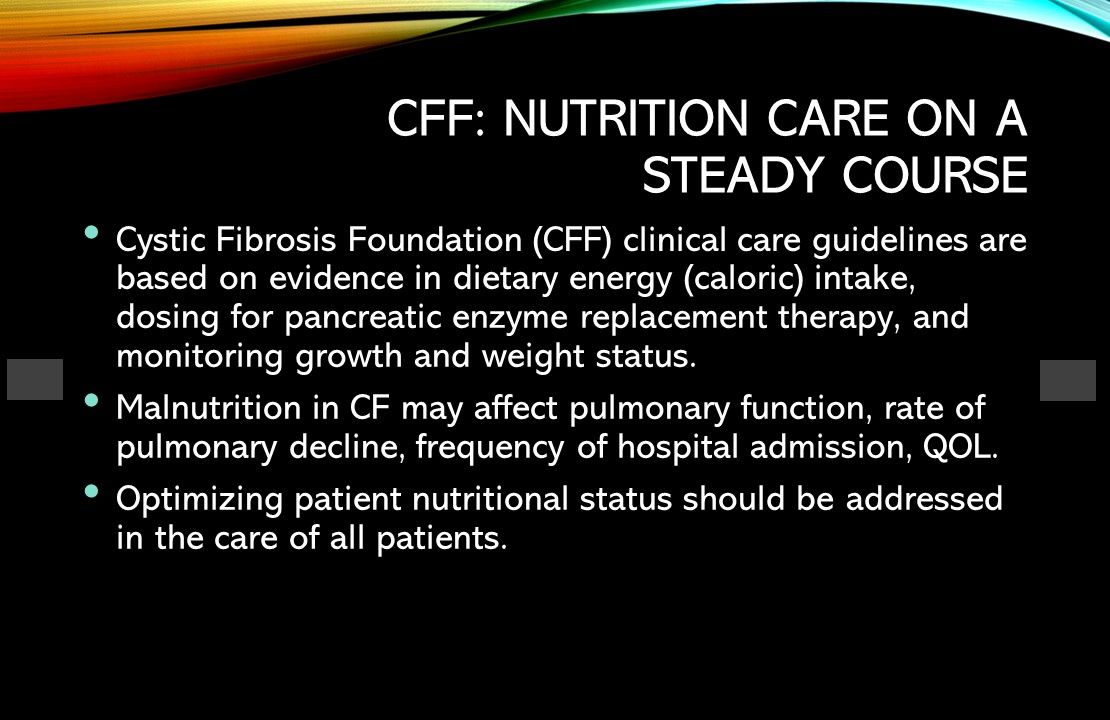
Nutrition care on a steady course. A 2019 review of the 2008 CFF clinical care guidelines found no need for an update. The 2008 recommendations were based on evidence in dietary energy (caloric) intake, dosing for pancreatic enzyme replacement therapy (PERT), and monitoring growth in childhood and weight status in patients of all ages. Malnutrition in CF may affect pulmonary function, rate of pulmonary decline, frequency of hospital admission, and quality of life. Optimizing patient nutritional status should be addressed in the care of all patients with CF.

Weight gain recommendations. The CFF guidelines include 2 Grade B recommendations on weight gain: (1) for patients aged >2 years, energy intakes of 110% to 200% of requirements for healthy patients of similar age, sex, and size results in improved weight gain; and (2) maintenance of a normal weight- and stature-for-age in children and a normal weight-for-height in adults was associated with better forced expiratory volume (FEV1) and survival.
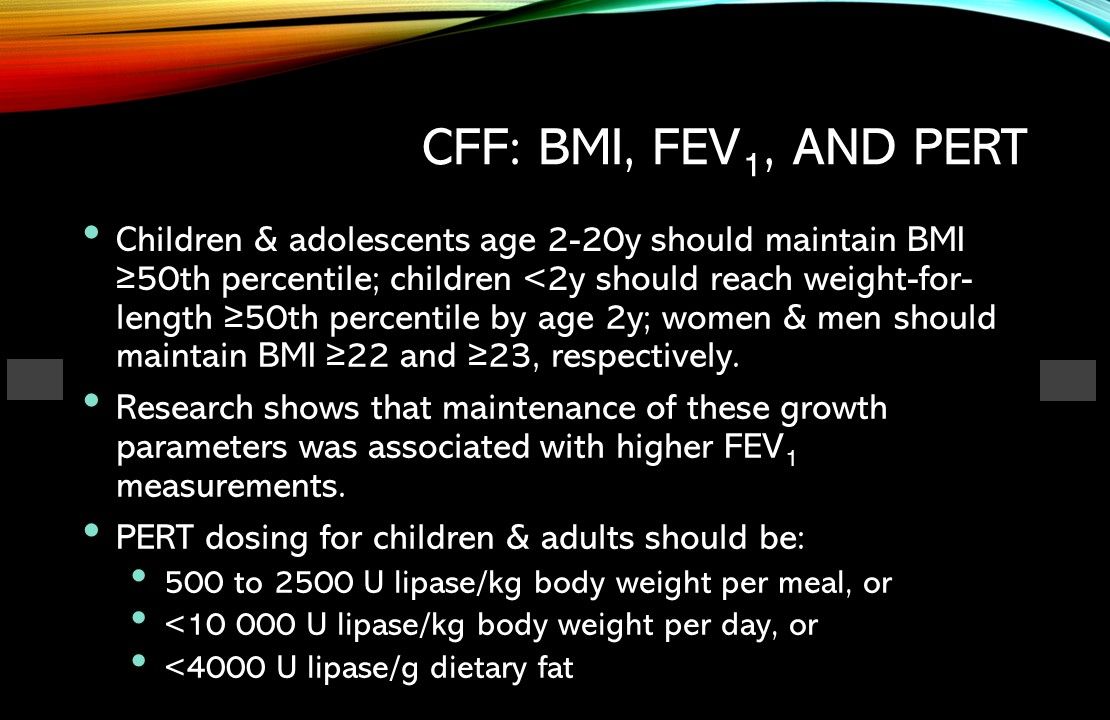
BMI, FEV1, and PERT. The guidelines recommended children and adolescents age 2-20y maintain a body mass index (BMI) ≥ 50th percentile; children < 2 years reach a weight-for-length ≥ 50th percentile by 2 years; and women and men maintain a BMI ≥ 22 and ≥ 23, respectively. Results had shown that maintenance of these growth parameters was associated with higher FEV1 measurements. Also, PERT dosing for children and adults should be 500 to 2500 units lipase per kilogram body weight per meal, or <10 000 units lipase per kilogram body weight per day, or <4000 units lipase per gram dietary fat.

Enteral tube feeding recommended. In 2016, the CFF recommended enteral tube feeding to improve age-dependent anthropometrics in patients with CF who are unable to consume adequate calories and protein to meet growth/weight maintenance goals in spite of appropriate evaluation and intervention by a multidisciplinary team. The CFF did not recommend for or against enteral tube feeding to improve or stabilize pulmonary function. Evaluation by a multidisciplinary team before enteral feeding tube placement was recommended to identify and treat conditions contributing to nutritional decline.
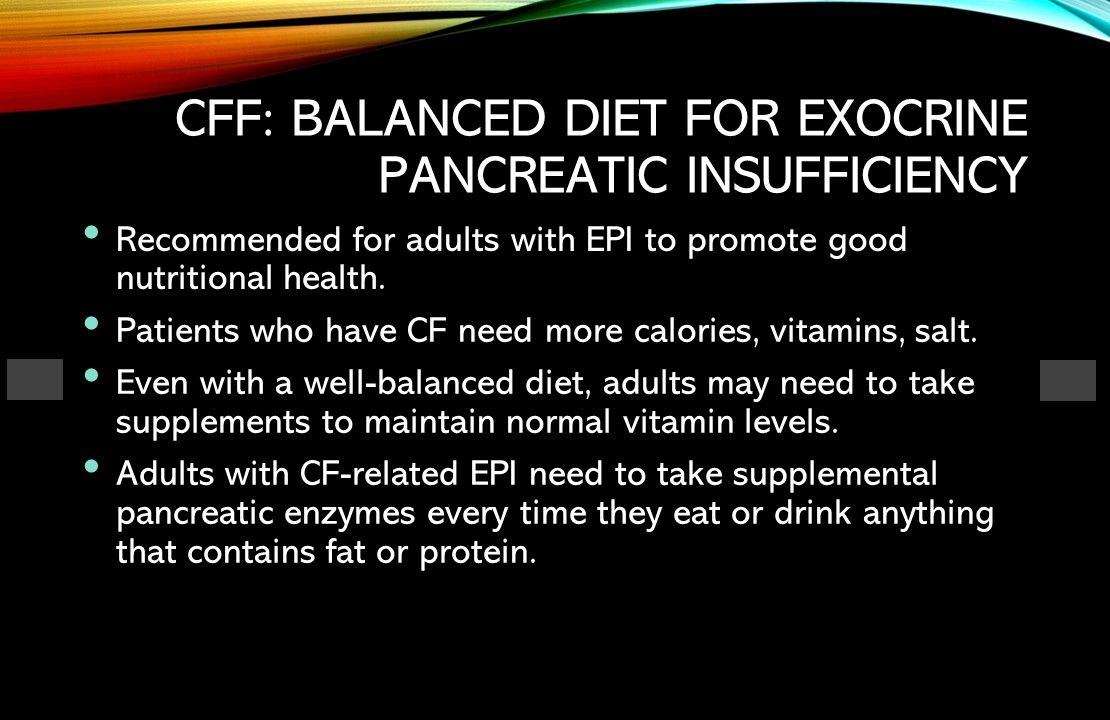
Balanced diet for exocrine pancreatic insufficiency. A balanced diet is recommended for adults with EPI resulting from CF to promote good nutritional health. Patients who have CF need more calories, vitamins, and salt than those who do not. Even adults with a well-balanced diet may need to take supplements to maintain normal vitamin levels. Adults with EPI resulting from CF need to take supplemental pancreatic enzymes every time they eat or drink anything that contains fat or protein.
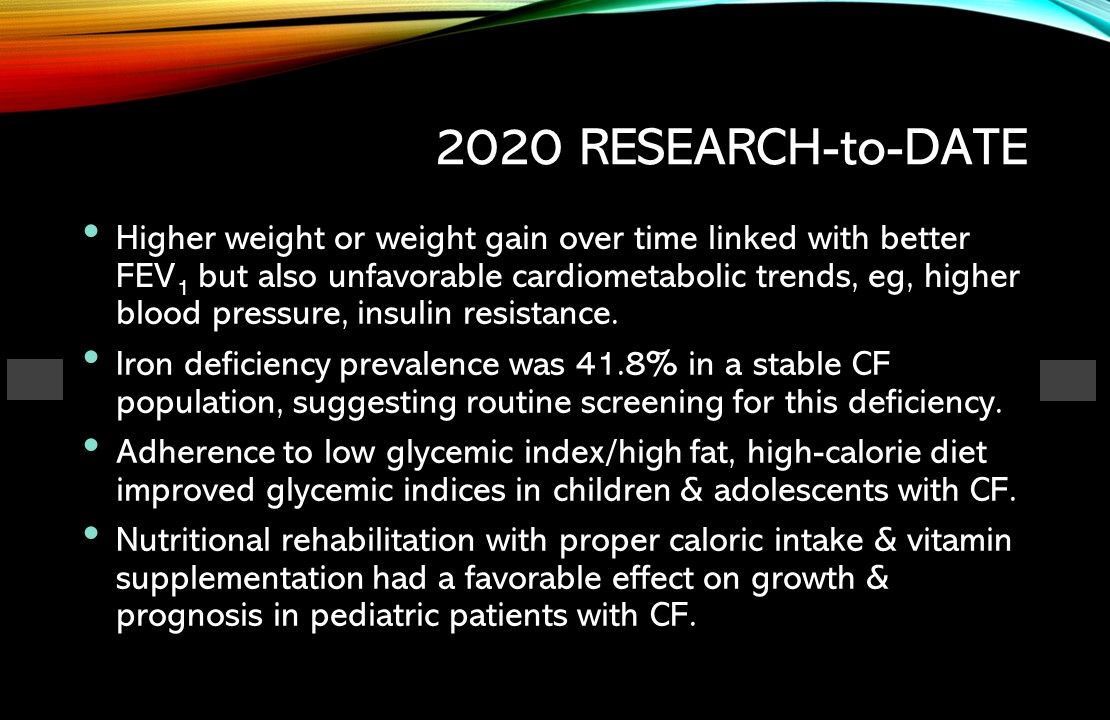
2020 research-to-date. In 2020 studies, a higher weight or weight gain over time was linked with a better FEV1 but also unfavorable cardiometabolic trends, including higher blood pressure and insulin resistance. Iron deficiency prevalence was 41.8% in a stable CF population, suggesting consideration of routine screening for this deficiency. Adherence to a low glycemic index/high fat, high-calorie diet improved glycemic indices in children and adolescents with CF. In a study of pediatric patients with CF, nutritional rehabilitation with proper caloric intake and vitamin supplementation had a favorable effect on growth and prognosis.
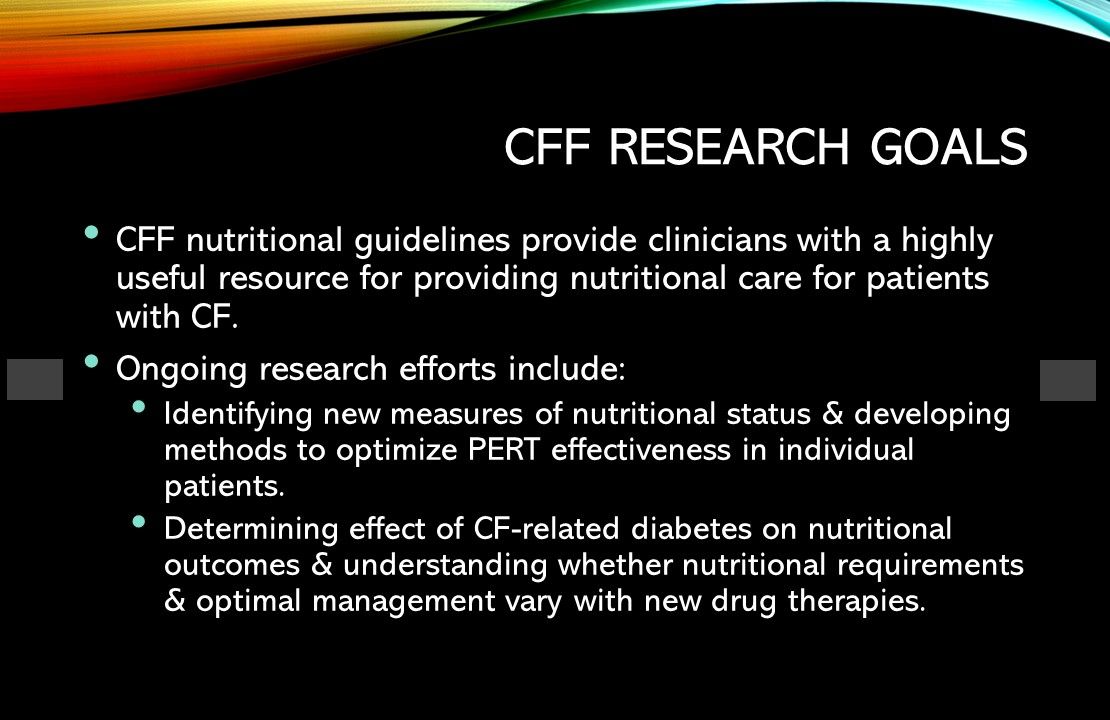
Research goals. The 2008 nutritional guidelines have given primary care physicians a highly useful resource for providing nutritional care for patients with CF. Ongoing research efforts include identifying new measures of nutritional status, developing methods to optimize PERT effectiveness in individual patients, determining the effect of CF-related diabetes on nutritional outcomes, and understanding whether nutritional requirements and optimal management vary with new drug therapies.

